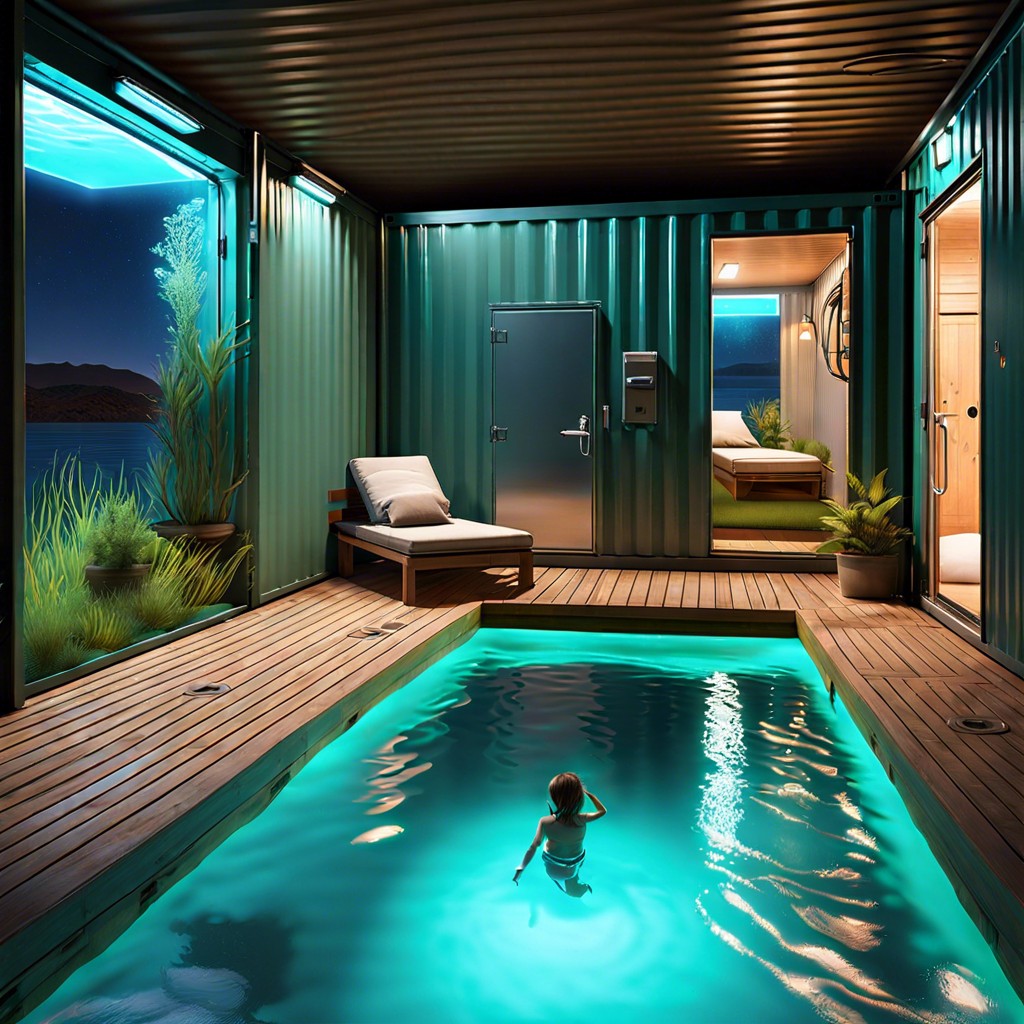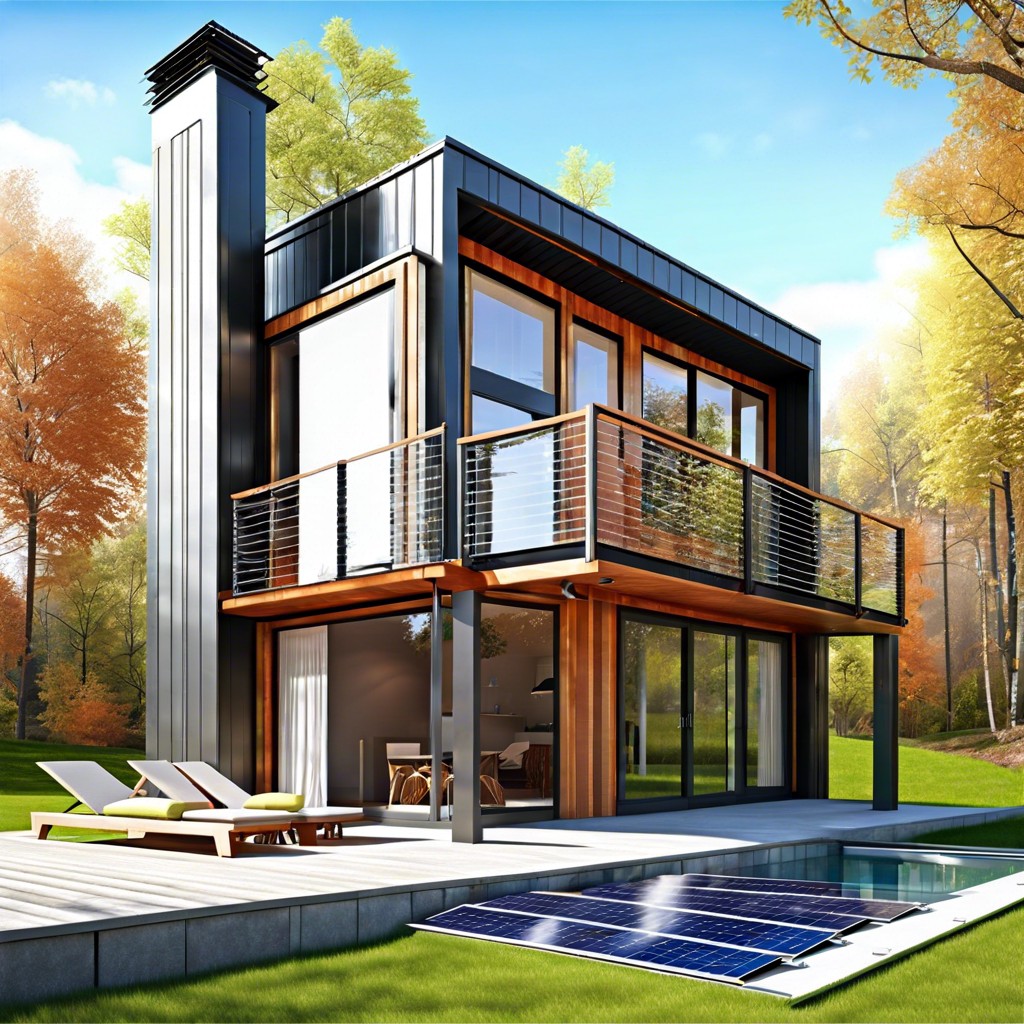Last updated on
The tiny home trend has exploded in the last few years. But is a smaller home better for the environment? Find out!
We have become more and more environmentally conscious over the past decade. Everything we do and everything we build has some environmental consequence, positive or negative.
Homeowners, and home builders, in particular, are constantly reminded of ways in which to live sustainably. The question is, however, does living in small houses actually mean your environmental footprint is smaller?
Tiny houses are very similar to micro-apartments. The floor coverage of these units is exceptionally small and spaces are designed to be highly compact. However, unlike apartments, tiny houses often have wheels attached.
In many respects, they are similar to mobile homes, although typically they are very well kitted out. Some tiny homes do stay in one place, and so have proper foundations.
Environmental Footprint

In a Ph.D. Study, Maria Saxton ascertained that by living in tiny houses, owners were able to reduce their environmental footprint by up to 45%. This is quite remarkable.
What is interesting from the study is that the way in which owners were able to reduce their environmental footprint was actually quite diverse, and in many cases, quite unexpected.
Spatial Footprint
The most obvious reduction in environmental impact is the actual amount of land a smaller home takes up or occupies. In addition to the footprint of a single tiny house, these smaller dwellings are typically situated much closer to each other, with less land between each unit.
Because more units are closer to each other, the larger-scale impact is that housing becomes denser, and so reduces the spatial footprint of a larger group of homes.
Knock-on Reductions
The study found that in addition to this spatial footprint reduction, there were other lifestyle changes that happened amongst the owners of tiny houses. The study found that owners bought less energy-intensive food products.
They also used more locally-grown food, sometimes growing food themselves. They traveled less in a number of modes of transport, including motor cars, rails, trains, busses, and air travel.
Interestingly, the homeowners of tiny homes drove more fuel-efficient cars too.
Recycling
While owning a tiny house doesn’t equate to recycling, the mindset of owning a tiny house and having a smaller environmental impact seems to carry across into other spheres.
Recycling numbers are higher amongst tiny house owners, which play a large role in reducing the impact of a home.
Building Materials
Building a tiny house uses fewer building materials. Floor areas are smaller, which immediately means a reduction in floor coverings and all other elements of a home build.
Because small homes have designs that fit as much as you can into a small space, in some areas the building materials or finishes, or appliances remain the same.
Having a large house or a small house still requires the owner to have basic appliances like a fridge, stove, and microwave. However, the number of windows in the home is fewer, as are the number of roof tiles, or the quantity of paint needed to paint the walls.
These reductions have an overall result of a smaller environmental impact for a small home.
Any Negatives?
There are some cases where tiny houses have caused an increase in environmental impact. Often because owners are living in smaller spaces, they choose to eat out at restaurants on a more regular basis.
Depending on the location of these small houses, traveling distances to and from work may increase. While recycling generally increases amongst tiny house owners, in certain cases because homes do not have space for recycling bins, recycling practices did actually decrease.
Heating and Cooling
Depending on the climate of where you live, the heating and cooling of a home is a major expense. In terms of the overall electric budget of a home, heating is often one of the major items on the list, costing homeowners huge amounts every year.
Cooling can also be an issue, as in some areas, homeowners need to use air conditioning units to cool their living spaces. If a tiny home is well built, heating and cooling these houses is quicker and far cheaper.
Heating the physical space is easier because it is smaller, and so the energy required is less. Also, modern tiny houses, in comparison to their older large home counterparts, are better insulted.
This means they can retain heat better and for longer. It can also mean that they are able to keep cool air inside better, not allowing heat from outside to come into the home.
Using Spaces
Because tiny houses are so much smaller, they can fit into small areas of land. Many of them are so small that they could actually fit in a backyard. As the practice of tiny homes continues to grow, landowners can really look at their land in a different way.
This higher density of living will certainly have a range of impacts on the environment.
Tiny House Mindset and Sustainability
People have a choice when buying or living in a home—choose something that is standard or consider a tiny home. Generally buying a tiny home means a change in lifestyle.
These changes in lifestyle mean living a more environmentally friendly life. It means being conscious of running an efficient home, and of what actions you as the owner take.
These lifestyle changes have certain environmental impacts. Owning a small house means a smaller environmental footprint and a reduction in environmental impacts.
Sustainability and sustainable living have been a word we have been hearing for the past 2 decades. Consciousness around this has risen dramatically over the last 20 years, particularly as climate change and global warming have become more topical.
Living sustainability is often an easy thing to say, but less easy to do in practice. Owning a tiny house, and building tiny homes, seems to be ways in which the average person can make a significant difference.
If nothing else, living in a tiny house will almost force the homeowner to be more conscious about their lifestyle and living practices, and be far more aware of actions they might be taking that have larger environmental consequences.
Table of Contents




